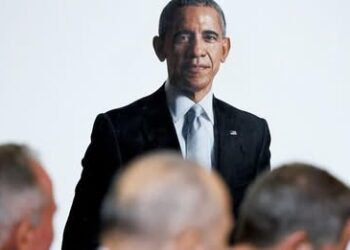The current administration under President Biden and Vice President Harris has taken a novel approach in the ongoing debate over gun rights in America, framing gun violence as a public health crisis. This strategic shift is more than just a method to address crime or improve public safety; it is an attempt to justify significant executive actions that could undermine the Second Amendment. For supporters of gun rights, this approach is seen as a critical moment requiring vigilant attention and response.
Since taking office in 2021, the Biden/Harris administration has pursued several measures aimed at curtailing Second Amendment rights. These include expanding the enforcement powers of the Bureau of Alcohol, Tobacco, Firearms and Explosives (ATF), shaping public opinion by labeling gun violence as a public health issue, and sidestepping legal frameworks like the Administrative Procedures Act. These efforts demonstrate a comprehensive approach to restricting gun rights, using every available tool to enforce their agenda.
The focus of this strategy is on labeling gun violence as a public health crisis, which allows the administration to leverage federal regulatory powers across various agencies and extend their influence into academic research and even the doctor-patient relationship. This strategy is not merely about achieving temporary policy changes; the administration is working to make these changes “Trump-proof”—ensuring they are difficult to reverse by future administrations.
Reframing Gun Violence as a Public Health Crisis
The Biden/Harris administration has made it clear that their approach to gun control involves bypassing Congress when necessary and using executive actions to implement their policies. The new tactic of framing gun violence as a public health crisis enables broader government intervention, potentially leading to more intrusive regulations. By shifting the narrative from crime and individual responsibility to public health, the administration is laying the groundwork for regulations that could significantly alter the landscape for gun owners in the United States.
Funding and Shaping Gun Research:
Historically, federal funding for gun violence research was restricted by the Dickey Amendment, which prevented the Centers for Disease Control and Prevention (CDC) from using funds to advocate for gun control. However, the Biden/Harris administration has increased support for research that treats gun violence as a public health issue. This research is used to promote restrictive gun laws under the guise of “data-driven solutions.” Critics argue that these studies often overlook the benefits of lawful gun ownership and focus exclusively on negative outcomes, paving the way for biased, anti-gun regulations.
Executive Orders and Regulatory Expansion:
President Biden has issued several executive orders addressing gun violence through a public health perspective. These include measures targeting so-called “ghost guns,” reclassifying pistol braces, and expanding community violence intervention programs. By framing these actions as responses to a public health emergency, the administration can bypass Congress, making it easier to impose restrictions without the checks and balances provided by the legislative process.
**Public Messaging: Framing Gun Control as Health and Safety**: The administration frequently compares gun violence to epidemics like the opioid crisis or even COVID-19. This messaging aims to condition the public to view gun control as a necessary part of a broader public health strategy. By normalizing the idea that restricting gun rights is essential for public safety, the administration seeks to shift public perception and reduce resistance to anti-gun regulations.
Expanding Bureaucratic Influence:
Beyond the CDC, other federal agencies such as the Department of Health and Human Services (HHS) and the Department of Justice have been involved in addressing gun violence as a public health issue. This expansion of bureaucratic influence creates a complex web of regulations, making it more difficult for law-abiding citizens to exercise their Second Amendment rights. Agencies that traditionally had no role in gun regulation are now part of the conversation, contributing to a more restrictive environment for gun owners.
Community Violence Intervention Programs:
A Trojan Horse for Gun Control**: One of the administration’s key initiatives is the promotion of Community Violence Intervention (CVI) programs. Although these programs are marketed as grassroots efforts to reduce gun violence, they often operate on the premise that guns themselves are the problem, rather than the individuals who misuse them. CVIs are used to justify funding and regulatory efforts focused on reducing gun access, particularly in urban areas, without addressing underlying issues such as crime, poverty, or inadequate law enforcement.
The Administration’s Motivations
The Biden/Harris administration’s focus on gun violence as a public health crisis serves several strategic purposes:
Shaping Public Perception**: By framing gun violence as a public health issue, the administration aims to shift public perception and industry compliance. For example, doctors may ask patients about firearms in their homes during routine visits, and even question children without their parents’ permission. While doctors have no enforcement power, the mere act of asking these questions reinforces the idea that guns are a public health concern. This narrative, supported by public health data, makes it politically costly for future administrations to reverse anti-Second Amendment regulations.
**Institutionalizing Infringement**: Engaging multiple federal agencies in the regulatory scheme lends credibility to each agency’s efforts. For instance, a proposal to eliminate lead from ammunition was framed as an environmental concern but was actually an attempt to restrict the availability of lead ammunition for gun owners. By institutionalizing infringement across federal agencies and regulations, the administration makes it more difficult for future administrations, such as a potential second Trump administration, to unwind these complex rules.
Implications for Gun Owners and Second Amendment Rights
For law-abiding gun owners who wish to protect their families, enjoy their hobbies, or exercise their constitutional rights, the Biden/Harris administration’s approach represents a significant challenge. By framing gun violence as a public health issue, the administration is bypassing Congress and imposing a wide range of restrictions that might not survive the legislative process. This approach sets a dangerous precedent, allowing unelected bureaucrats to reshape gun ownership in America through regulations rather than laws passed by elected representatives.
When gun violence is treated as a public health crisis, it allows the administration to invoke emergency powers and executive actions that could infringe on gun rights without the scrutiny and debate typical of the legislative process. This framing not only impacts policy but also shifts the broader conversation, stigmatizing gun owners as part of the problem rather than recognizing them as responsible citizens exercising their constitutional rights.
Moreover, the public health approach often overlooks the real causes of gun violence: criminals who break the law, not the firearms themselves. By focusing on the tools rather than the individuals, the administration diverts attention from more effective solutions, such as tougher penalties for violent offenders, improved mental health care, and stronger support for law enforcement.
In conclusion, the Biden/Harris administration’s strategy of framing gun violence as a public health crisis is a calculated move to impose far-reaching gun control measures without the need for legislative approval. This approach raises significant concerns about the erosion of Second Amendment rights and the potential for unelected officials to make sweeping changes to gun ownership in America. For gun owners and advocates of the Second Amendment, this is a critical time to remain vigilant and engaged in the fight to protect their rights.









